Click on images to enlarge
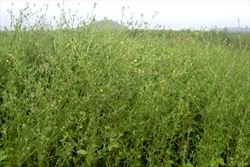
dense infestation (Photo: Forest and Kim Starr, USGS)
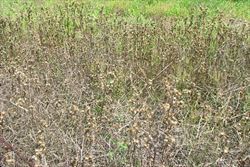
infestation of old plants (Photo: Sheldon Navie)
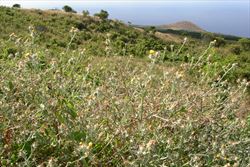
habit (Photo: Forest and Kim Starr, USGS)
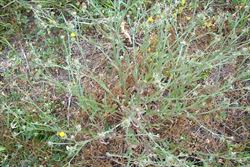
habit (Photo: Sheldon Navie)
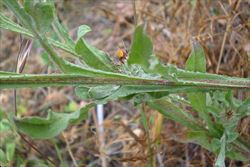
close-up of winged stem and upper leaves (Photo: Sheldon Navie)
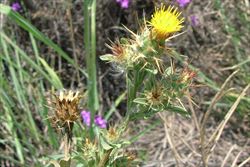
flower-heads (Photo: Sheldon Navie)
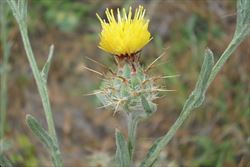
close-up of yellow flower-head showing spine-tipped bracts (Photo: Sheldon Navie)
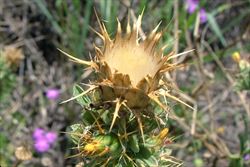
close-up of mature flower-head with seeds (Photo: Sheldon Navie)
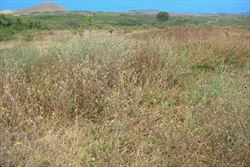
large infestation (Photo: Forest and Kim Starr, USGS)
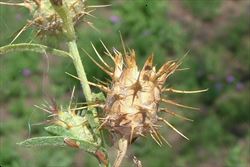
close-up of mature flower-head from side-on (Photo: Sheldon Navie)
Scientific Name
Centaurea melitensis L.
Family
Asteraceae (Queensland, New South Wales, the ACT, Victoria, Tasmania, Western Australia and the Northern Territory)Compositae (South Australia)
Common Names
cockspur thistle, Malta star-thistle, Malta starthistle, Malta thistle, Maltese centaury, Maltese cockspur, Maltese star thistle, Maltese star-thistle, Maltese starthistle, Maltese thistle, Napa star thistle, Napa thistle, saucy Jack, star thistle, tocolote, tocalote star thistle, wild Irishman, yellow burr cockspur, yellow cockspur, yellow star thistle
Origin
Native to the Mediterranean Region (i.e. the Azores, the Canary Islands, Algeria, north-western Libya, Morocco, Tunisia, Greece, Italy, Yugoslavia, France, Portugal and Spain).
Naturalised Distribution
Widely naturalised in Australia (i.e. throughout Queensland, New South Wales, the ACT, Victoria and South Australia, and also in parts of the Northern Territory, Western Australia and Tasmania). Also naturalised on Norfolk Island and previously also on Lord Howe Island.
Naturalised overseas in the USA and Hawaii.
Notes
Although this species is mainly regarded as a weed of disturbed sites and agricultural areas (i.e. crops and pastures), it also invades rangelands, grasslands, open woodlands and other disturbed natural habitats. It is therefore also regarded as an environmental weed in several states (i.e. Western Australia, Victoria, South Australia and Queensland). During a recent survey, it was listed as a priority environmental weed in at least one Natural Resource Management region.
In South Australia, Maltese cockspur (Centaurea melitensis) is regarded as being invasive in intact native vegetation with a moderate potential to reduce native species diversity. It is present in several conservation areas in this state (e.g. Coorong National Park, Lincoln National Park and Marino Conservation Park) and is one of the most common introduced species in the Flinders Ranges region. Maltese cockspur (Centaurea melitensis) is also seen as a threat to several bioregions in Victoria.
Internationally, it is also listed in the Global Invasive Species Database because of its highly competitive nature and ability to form dense, impenetrable, stands that displace native vegetation.

